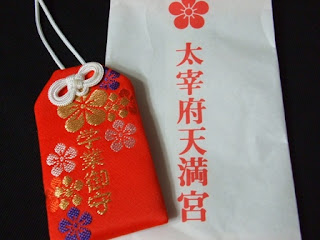On the examination
season from January to March, Shinto shrine of any place becomes all go by the
worship of the examinee praying for a pass.
All the precincts
are buried in particular with "the votive tablet called Ema" which
request for pass was written not to mention the congestion of the worshiper
exhaustively when it becomes the famous Shinto shrine as "God of the
study".
"God of the
study" refers to Michizane Sugawara who played an active part in the Heian
era, and all the Shinto shrines named "○○ Tenjin ""○○ Tenjin Corporation ""○○ Tenman-gu Shrine that there is much in the
whole country seem to do Michizane Sugawara with an enshrined deity.
Of course, the
reason why Michizane Sugawara is said as “God of the study” is not only his
political skills and the achievement, but also the talent as the poet in
literary person.
In Kanto area, three
famous Shinto shrines dedicated to Michizane Sugawara often include
"Yushima Tenjin", "Kameido Tenjin" and "Yaho Tenman-gu
Shrine".
By the way,
"Kitano-Tenman-gu Shrine" of Kyoto, "Hofu Tenman-gu Shrine"
of Yamaguchi "Dazaifu Tenman-gu Shrine" of Fukuoka are called as “Three
Tenjin in Japan”.
Many visitors from
overseas visit these Shinto shrines, and seems to lack in a wish to a votive
tablet (Ema) recently.

























